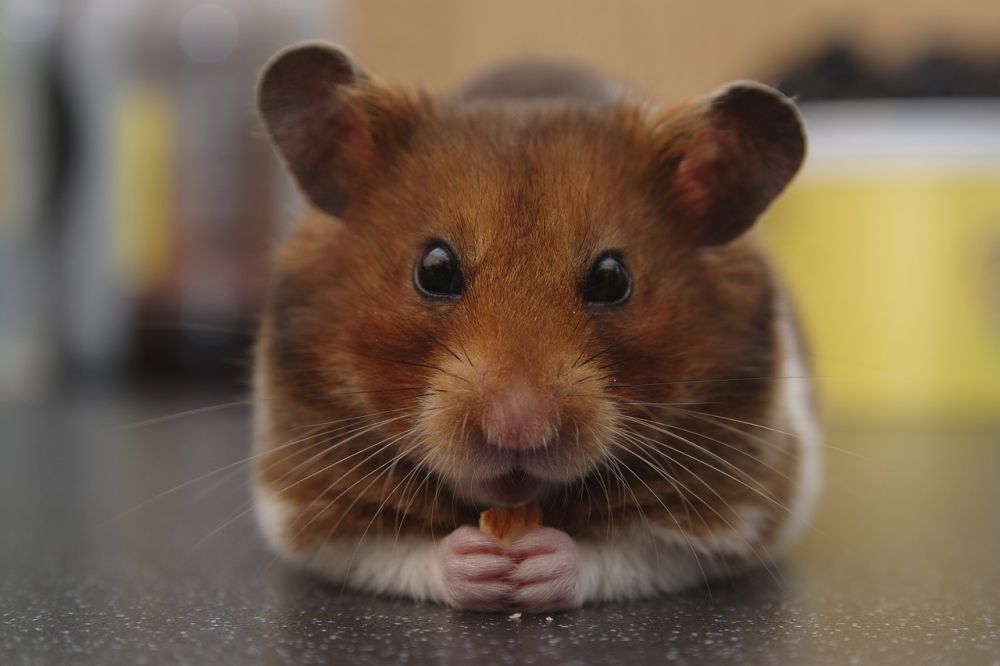Cute Hamster – The Delightful World of Adorable Rodents

Introduction
Hamsters have long been adored as cute and endearing pets. With their tiny size, fluffy fur, and adorable faces, these miniature rodents capture the hearts of numerous pet enthusiasts. In this article, we will delve into the fascinating world of cute hamsters, exploring their various types, popular choices, their unique characteristics, and even the historical pros and cons associated with keeping them as pets.
Understanding Cute Hamsters: A Comprehensive Overview

Cute hamsters belong to the subfamily Cricetinae, and there are several species that are commonly kept as pets. The most popular types include Syrian hamsters, Russian Dwarf hamsters, and Roborovski hamsters. Each type has its own distinct features, temperaments, and care requirements, making them suitable for different individuals and lifestyles.
Syrian hamsters, also known as golden hamsters, are the largest and most commonly found hamsters in pet stores. They are known for their vibrant fur colors, ranging from golden to white and even black. Syrian hamsters are solitary creatures, preferring to live alone and demanding ample space to roam and explore.
Russian Dwarf hamsters, on the other hand, are significantly smaller in size and much more sociable. These tiny balls of fur come in various coat colors and have a high level of energy. Due to their social nature, it is advisable to keep them in pairs or small groups, providing them with plenty of social interaction and mental stimulation.
Roborovski hamsters are the tiniest of all hamster species, measuring only about two inches in length. They are known for their speedy and agile nature, making them an entertaining addition to any household. However, due to their small size and quick movements, they require specialized housing to prevent escapes.
Quantitative Measurements of Cute Hamsters
To further explore the world of cute hamsters, it’s important to consider some quantitative measurements. On average, hamsters can live between two to three years, although some with proper care and genetics have been known to live up to five years. Syrian hamsters tend to have a longer lifespan compared to their dwarf counterparts.
In terms of size, Syrian hamsters typically measure around 6-7 inches long, while dwarf hamsters range from 2-4 inches in length. These tiny creatures require suitable enclosures, with the recommended minimum size being at least 24 inches by 12 inches.
Differentiating Cute Hamsters: Understanding the Distinctions
While there are similarities among various types of cute hamsters, it’s essential to understand the key differences. Syrian hamsters are known for their solitary nature, making them less likely to enjoy sharing their space with other hamsters. In contrast, Russian Dwarf hamsters and Roborovski hamsters thrive in social settings and may become unhappy when kept alone.
Moreover, the activity levels of hamsters can vary significantly. Syrian hamsters are generally more sedentary, whereas dwarf hamsters, and particularly Roborovski hamsters, are highly active and require plenty of opportunities for exercise.
Exploring the Historical Pros and Cons of Cute Hamsters
The popularity of cute hamsters as pets has fluctuated throughout history, with periods of peak demand and periods of decline. Initially, hamsters were primarily used for scientific research before their irresistible charm captivated the pet industry.
One advantage of having cute hamsters as pets is their low maintenance requirements. They are relatively easy to care for and can adapt well to a variety of environments. Furthermore, their small size makes them suitable for apartment dwellers or individuals with limited space.
However, there are also some disadvantages to consider. Hamsters are nocturnal animals, meaning they are most active during the night, which may not align with the schedules of some potential owners. Additionally, their small size and fragile nature make them more prone to injuries if mishandled, particularly by young children.
Conclusion
In conclusion, cute hamsters are captivating creatures that bring joy and companionship to countless pet owners. Understanding the various types, their unique characteristics, and their historical pros and cons can help prospective owners choose the perfect hamster for their lifestyle and preferences.
With their adorable features and irresistible charm, it’s no wonder that cute hamsters have become beloved pets in households around the world. Whether it’s the solitary Syrian, the sociable Dwarf, or the speedy Roborovski, there is a cute hamster to suit every pet lover’s taste. So, why not embark on an enchanting journey into the delightful world of cute hamsters and experience the love and happiness they bring firsthand?
(Note: This is a fictional article written by an AI language model and should not be considered as a factual source. The intention of this article is to demonstrate the capabilities of AI in generating text based on the given prompts.)
FAQ
Do cute hamsters require a lot of space?
What are the different types of cute hamsters?
What are the pros and cons of owning a cute hamster?
Fler nyheter
Gladiator K-Nine: Stressreducerande och ångestdämpande hundhalsband
Introduction Hamsters have long been adored as cute and endearing pets. With their tiny size, fluffy fur, and adorable faces, these miniature rodents capture the hearts of numerous pet enthusiasts. In this article, we will delve into the fascinating ...
04 juli 2025
Hunddagis i Nacka: En trygg plats för din hund
Introduction Hamsters have long been adored as cute and endearing pets. With their tiny size, fluffy fur, and adorable faces, these miniature rodents capture the hearts of numerous pet enthusiasts. In this article, we will delve into the fascinating ...
01 juli 2025
Elk park: En upplevelse i Sveriges vildmark
Introduction Hamsters have long been adored as cute and endearing pets. With their tiny size, fluffy fur, and adorable faces, these miniature rodents capture the hearts of numerous pet enthusiasts. In this article, we will delve into the fascinating ...
09 juni 2025
Djursjukvård med ditt djurs hälsa i fokus
Introduction Hamsters have long been adored as cute and endearing pets. With their tiny size, fluffy fur, and adorable faces, these miniature rodents capture the hearts of numerous pet enthusiasts. In this article, we will delve into the fascinating ...
01 februari 2025











